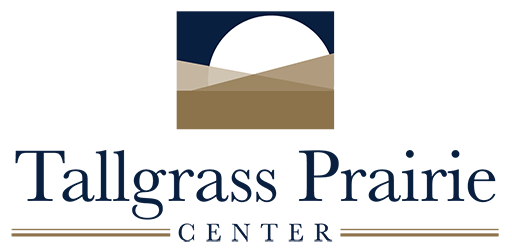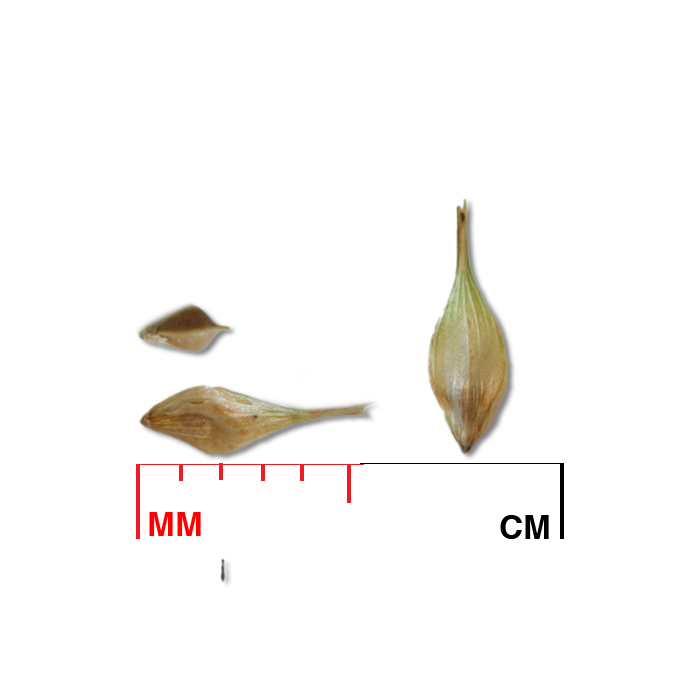bottlebrush sedge
Table of Contents
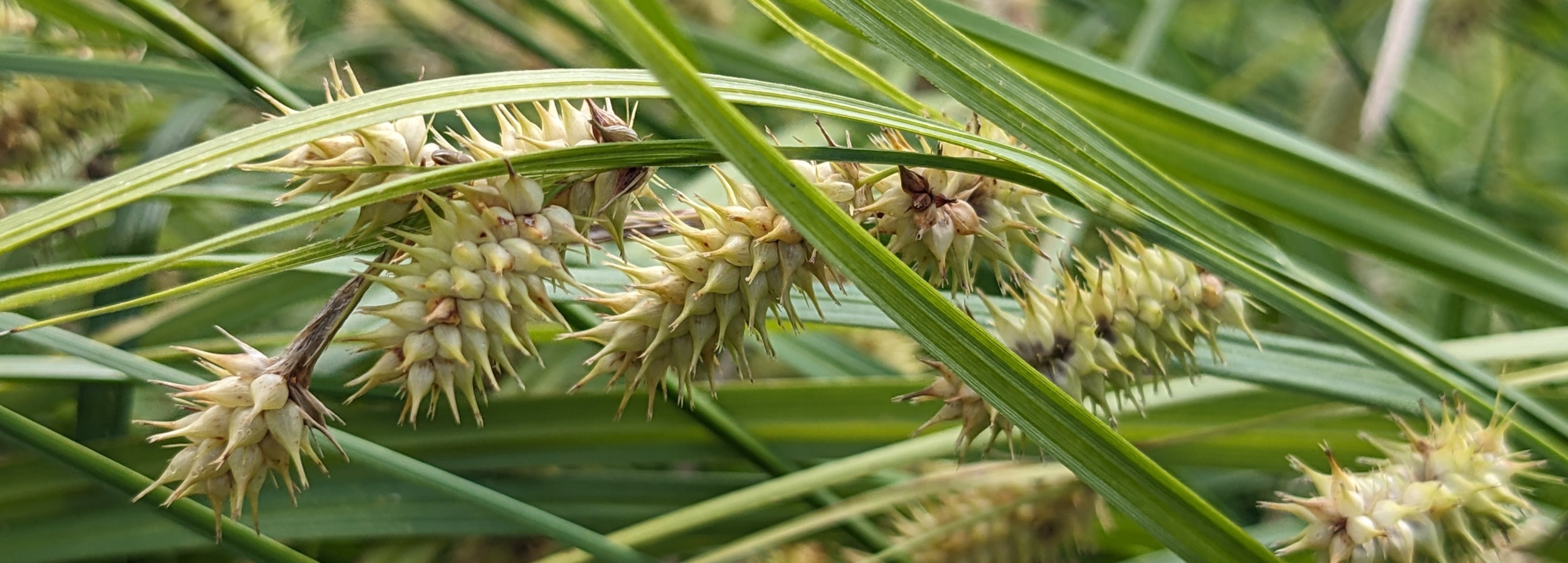
Carex hystericina Muhl. ex Willd.
Alternate Common Name: porcupine sedge
Scientific Synonym: Carex hystricina Muhl. Rydberg.
Family: sedge family (Cyperaceae)
Functional Group: sedges and rushes
Description
- Life cycle and growth form
Perennial with fibrous roots, forms clumps.
Height: 3/4 - 3 ft
- Leaves and stem
Leaves in alternate, 3-ranked arrangement, hairless; basal sheaths are reddish purple and fibrous; culms are stiff and 3-sided, hairless, unbranched.
- Flower, fruit and seedhead
Fruit/seedhead: Seed head consists of a terminal male spike and one to four prickly, cylindrical pistillate spikes, each containing 40-100 perigynia (seed containing structures).
Pollination: wind
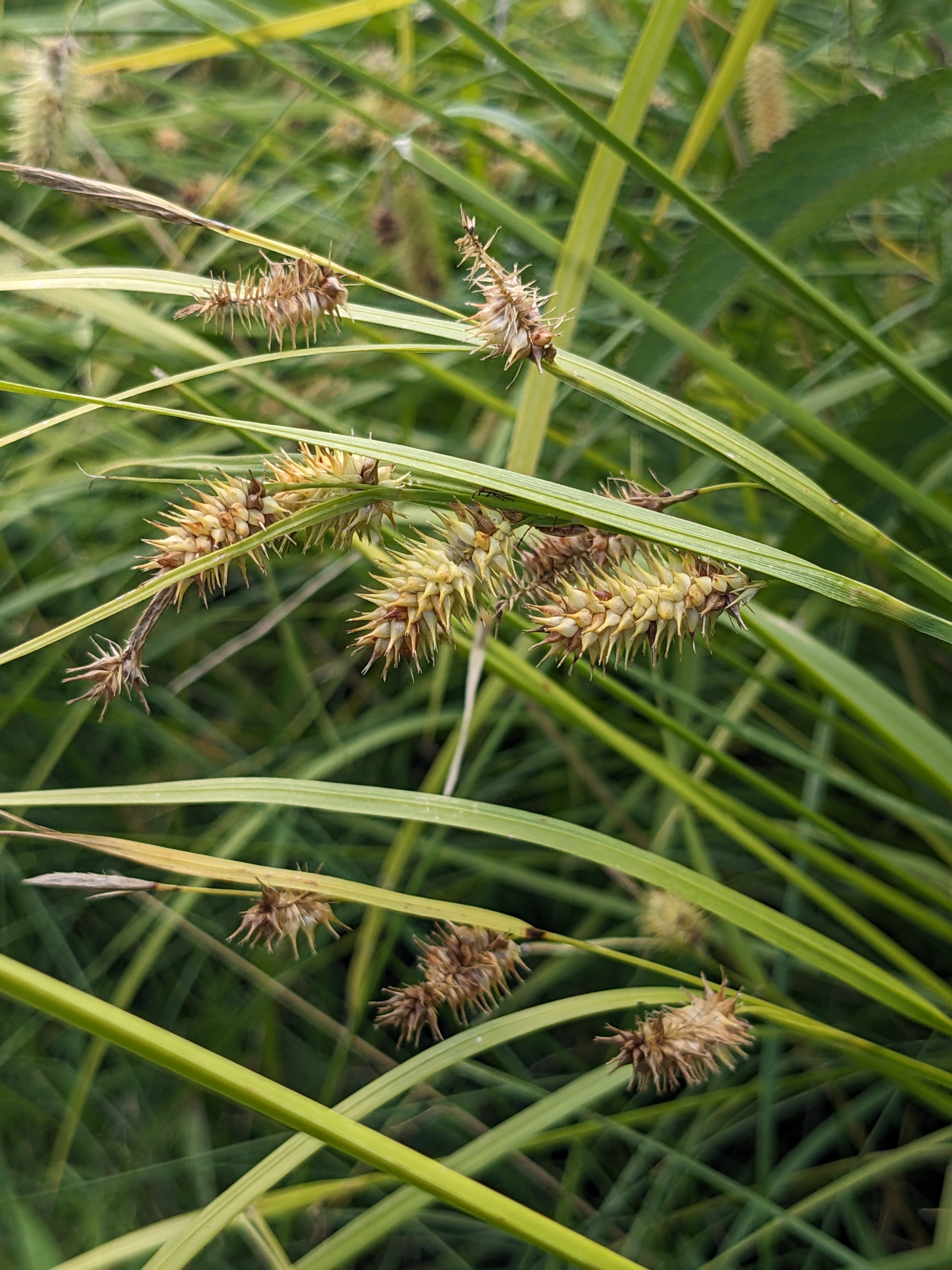
- Seed
Seed characteristics
Seed weight:
Seeds per ounce: 30,000 seeds/oz (IA NRCS)
1000 seed weight: 0.48g (Seed Information Database)
Description: “Seeds” are 3-sided, ovate, brown achenes, wrapped in an inflated, distinctly veined perigynium with a long beak and two short teeth.
Typical seed test
PLS: 87.48% (n=1)
Purity: 99.41% (n=1)
Germination: 62% (n=1)
Dormancy: 26% (n=1, determined by TZ)
(based on one test of a seedlot grown at TPC)
- Habitat and range
Habitat: Moist to wet soil; partial to full sun; prairies, meadows, seeps, fens, marshes, swamps, ditches; Wetland Indicator Status is Obligate Wetland (OBL) for the Midwest.
Conservation status: Global- G5, secure; District of Columbia and Kentucky- SH, possibly extirpated; Maryland- S1, critically imperiled; California and Georgia- S2, imperiled; Arizona, Kansas, Washington, West Virginia, Illinois, and Wyoming- S3, vulnerable (NatureServe)
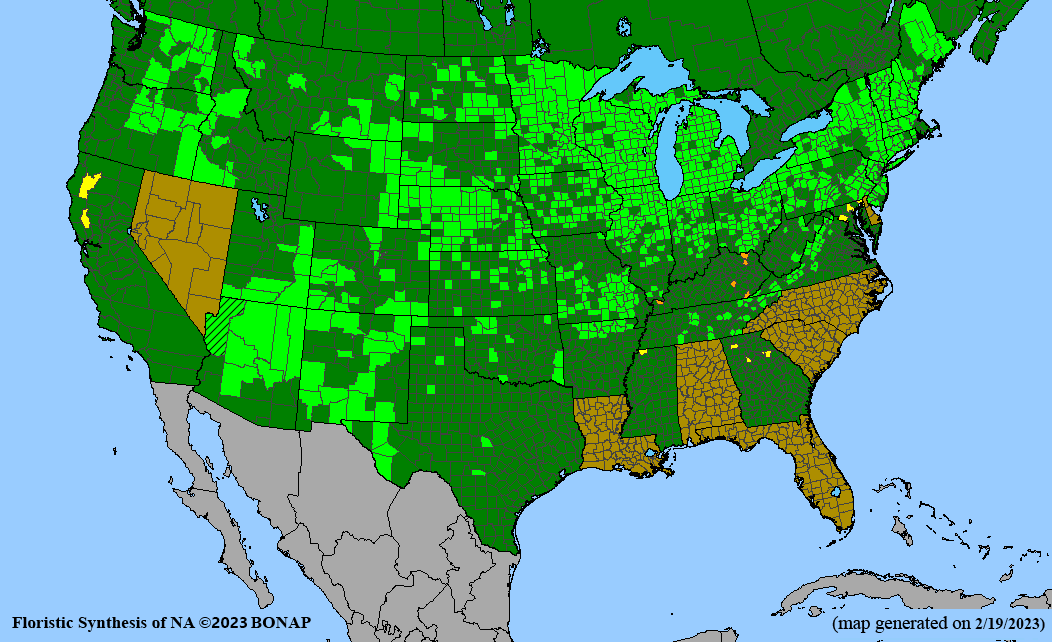
General Comments
Sedges are a large, diverse group of grass-like plants that are important components of prairies, wetlands, and woodlands across our region. In Iowa alone, there are about 120 species of sedges. Grasshoppers and the larvae of skippers and other butterflies and moths feed on wetland sedge foliage, and their seeds are eaten by waterfowl and other birds. Sedges are notoriously difficult to identify to species. The prickly, cylindrical spikes of bottlebrush sedge are somewhat distinctive, but this species can be confused with longhair or bristly sedge (Carex comosa) which also occurs in our region and sallow sedge (Carex lurida) which is a state listed species in Iowa but is more common in neighboring states to the south and east. The development of stock seed by the Tallgrass Prairie Center in the early 2000s enabled broader access to reliably identified sedge species by native seed growers. As an obligate wetland species, bottlebrush sedge benefits from irrigation in production settings.
Recommendations for Seed Production
- Establishment for seed production
Direct seeding
We do not have experience with direct seeding this species for seed production.
Greenhouse
Seed pre-treatment: Benefits from cold-moist stratification for 30 days.
Sowing: Sow in germination flats or directly into plugs (2-3 seeds per cell), covering seed lightly (light improves germination of many sedge species); maintain even moisture until germination. Daytime temperatures should be around 70-80°F (22-27°C) and allowed to drop at night to 50-60°F (10-15°C). We have had good success planting into 2.5 in deep, 73-cell plug flats that are ridged to direct root development downward and have 3/4 in bottom openings to encourage root pruning and the formation of firmly rooted plugs for transplanting.
Transplanting: Seedlings are ready to transplant to the field about 10 weeks after sowing. Pop out a few plugs to check for adequate root development that will provide sturdy plugs for planting. A week or two before transplanting, move flats outside to ‘harden off.’
- Stand management
Weeds: Plastic mulch reduces weed pressure in the first year or more. Holes in the plastic should be widened somewhat in subsequent years to allow the bunches to expand. Bunching plants are robust and leafy, competing well with many weeds; we have interplanted porcupine sedge with wetland forbs to provide support and reduce weed pressure.
Pests: None noted.
Diseases: None noted.
Soil moisture: Irrigation is recommended, though bottlebrush sedge may require less supplemental water than other wetland sedges. Drip tape can be applied under plastic mulch as planting beds are formed.
- Seed production
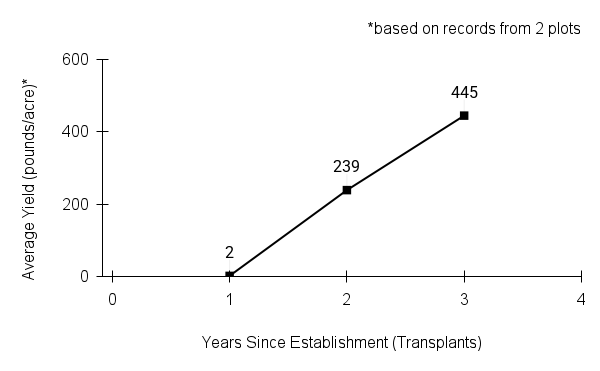
First harvest: Plants produce a small amount of seed in the year following the transplant year. Peak harvest may be in the third year after transplanting.
Yield: At peak (3 years after planting), yields are around 445 lbs per acre (extrapolated from two production plots).
Stand life: Plants may be long-lived, but long-term yields are unknown.
Flowering date: June-July
Seed maturity/harvest date: Early to mid-July in northeast Iowa.
Seed retention: Seed begins to shatter in mid-July.
Harvest date range at TPC (2012-2024): June 26 - July 22
Recommended harvest method: Combine larger plantings. Hand harvest is effective for small plantings, and seed threshes easily from stems once dried.
- Seed cleaning and storage
Cleaning process: Air-dry seed for two weeks or more after harvest. Pass material through a coarse screen (1/2 in hardware cloth) to remove larger stemmy material, if needed, then air screen.
Seed storage: Cool/dry (33-50° F, 30-50% RH)
Released Germplasm
Source Identified material: Natural Selections/Iowa Ecotype Zone IA
- References
Carex hystericina (Porcupine Sedge). Minnesota Wildflowers. (n.d.). https://www.minnesotawildflowers.info/grass-sedge-rush/porcupine-sedge
Eggers, S. D., & Reed, D. M. (1997). Shallow Marshes. In Wetland Plants and Plant Communities of Minnesota and Wisconsin (2nd ed., p. 82). essay, U.S. Army Corps of Engineers, St. Paul District
Great Plains Flora Association. (1991). Sedge Family. In Flora of the Great Plains (2nd ed., p. 1080). University Press of Kansas.
Houseal, G. (2010). Plasticulture for seed production of wetland (Carex) species. Native Plants Journal, 11(1), 58-64. https://doi.org/10.2979/NPJ.2010.11.1.58
Kartesz, J.T., The Biota of North America Program (BONAP). 2023. North American Plant Atlas. (http://bonap.net/napa). Chapel Hill, N.C. [maps generated from Kartesz, J.T. 2023. Floristic Synthesis of North America, Version 1.0. Biota of North America Program (BONAP). (in press)]
Kettenring KM, Gardner G, Galatowitsch SM. Effect of light on seed germination of eight wetland Carex species. Ann Bot. 2006 Oct;98(4):869-74. doi: 10.1093/aob/mcl170. Epub 2006 Aug 11. PMID: 16905568; PMCID: PMC2806167.
Kettering, K.M. & Galatowitsch S.M. (2007) Temperature requirements for dormancy break and seed germination vary greatly among 14 wetland Carex species. Aquatic Botany, 87(3), 209 -220. https://doi.org/10.1016/j.aquabot.2007.06.003
Mohlenbrock, R. H. (1999). Carex hystericina. In Illustrated Flora of Illinois - Sedges: Carex (p. 285). Southern Illinois University Press.
NatureServe. 2024. NatureServe Network Biodiversity Location Data accessed through NatureServe Explorer [web application]. NatureServe, Arlington, Virginia. Available https://explorer.natureserve.org/. (Accessed: February 29, 2024)..
Porcupine Sedge. Illinois Wildflowers. (n.d.). https://www.illinoiswildflowers.info/grasses/plants/porc_sedge.htm
USDA NRCS National Plant Data Team. (n.d.). Carex hystericina Muhl. ex Willd.. USDA plants database. https://plants.usda.gov/home/plantProfile?symbol=CAHY4
Species Guide Updated 12/1/2025

